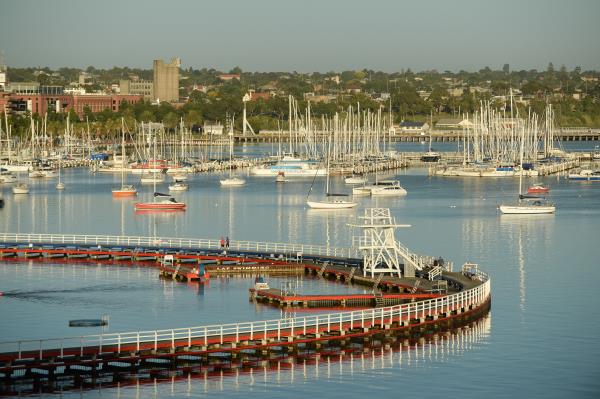
By NOEL MURPHY
IF ONE thing in life is certain, apart from death and taxes, it’s change.
It’s a term that might be synonymous with Geelong, which is changing constantly on virtually every front – population, jobs, shopping, housing and more.
The city started out nearly 180 years ago as a small farming-trading outpost almost as far from the civilised world as it could possibly be.
But Geelong has moved through various guises to become a sophisticated first world city, one that connects globally every day.
But who and what is the Geelong of 2015 exactly?
Well, chances are you’re working in the health, retail, manufacturing or education sector – just like more than half Geelong’s 78,000-strong workforce.
A great many Geelong workers receive their pay cheques from Barwon Health, the Department of Education, Deakin University, City Hall, Cotton On, Target, Coles or Woolworths or the Catholic education system – they’re the biggest single employers in the region apart from the small-business sector.
But for a city supposedly being hammered by the exit of major industrial players Alcoa and Ford, it’s perhaps surprising to find about one in eight people working in manufacturing – running third to health and retail as the sector employing the most people in the region.
In fact, manufacturing is anything but dead in Geelong, generating $1.85 billion a year as the region’s single biggest wealth-generating sector.
Running a distant second is the health sector at $954 million – much of it paid by the public purse but employing 16 per cent of us.
Retail keeps 14 per cent in work and generates $691 million, almost a third of the contribution of local manufacturing operations.
So who else keeps the region 220,000-plus population in gainful employment? And how much do they pump into the region’s economy?
The numbers might be dry but they’re still interesting:
* education/training, 11 per cent, $753m;
* accommodation/food services, seven per cent, $280m;
* construction, seven per cent, $614m;
* public service/safety, five per cent, $426m; and
* professional/scientific/technical services, five per cent, $465.
Other sectors employing more than 1000 people include: transport, postal and warehousing; financial and insurances services; wholesalers; administration and support services; and rental, hiring and real estate.
All up, the city hosts 16,000 businesses. Its gross regional product total $10.65 billion, climbing around two per cent a year even though unemployment currently running around seven per cent.
Socially, Geelong’s homefront is vastly different to the lifestyles of the past, which were often crowded although on larger allotments. New house blocks today are smaller and built out almost invariably to the fenceline.
The total 99,500 dwellings at last official count across the region – servicing that population of 220,000 – give an idea of how medium-density policies have impacted on living spaces.
Change remains the constant, though, and Geelong is bulging at its borders as new estates and suburbs spring up across its length and breadth – from the rapidly-growing Bellarine Peninsula in the east, then expanding north and west near the ring road and into southern reaches closer to the surf coast.
The population is expected to grow almost 50 per cent in the next 20 years – a fact driven by price advantages over metropolitan Melbourne, lifestyle choices and new job opportunities.
The fact Melbourne continues to grow by between 75,000 and 100,000 a year places extraordinary pressure on its infrastructure, schools, hospitals, roads, trains and numerous services – all of which makes the Geelong region look an evermore serious alternative.
However, the growth brings new demands and challenges for those big-ticket infrastructure items in Geelong, too.
Some things, it seems , never change.






